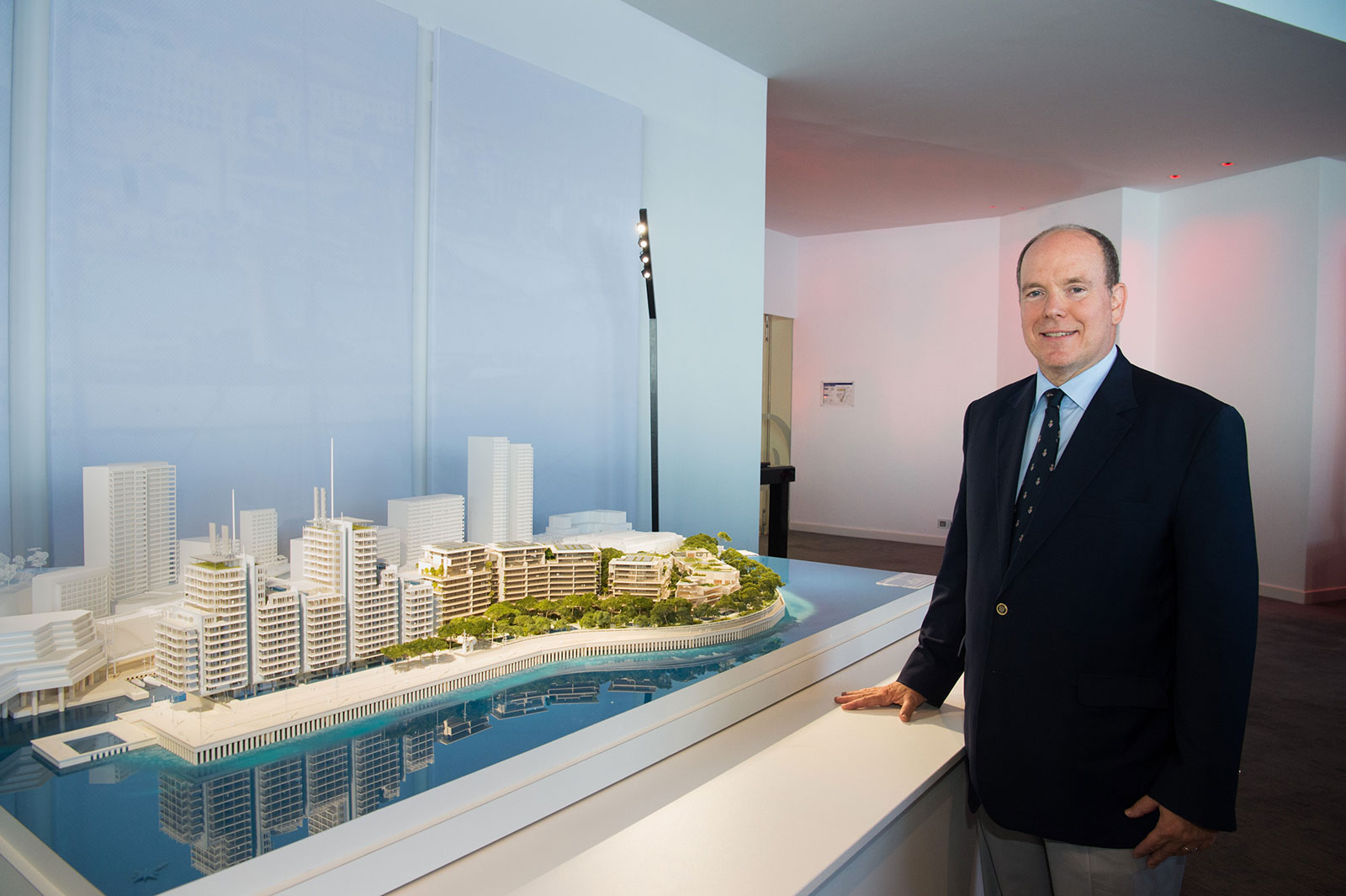MONACO – Rising from the Mediterranean, Monaco’s newest urban district, Mareterra, represents a bold fusion of environmental foresight and architectural ambition. Officially inaugurated in December 2024, this €2 billion extension was nearly a decade in the making. It adds six hectares to the principality’s limited landmass. Mareterra provides a fresh answer to Monaco’s age-old dilemma: how to grow when surrounded by sea and bordered by France.
Engineering innovation beneath the waves
Located near the Larvotto beachfront at the eastern boundary of Monaco, Mareterra emerges as a seamless continuation of the existing urban fabric. It is now home to a new marina, residential and commercial complexes, verdant promenades, and some of the most advanced maritime engineering in Europe. Its completion adds approximately 3% to the nation’s territory.
At the heart of the project lies a deep respect for ecological resilience. The district features 18 colossal caissons – 26-metre-high, 10,000-ton concrete structures installed on the seabed. These serve both as foundations and as integral components of the breakwater system. The Jarlan chambers, engineered with vertical slits, absorb and diffuse wave energy. They shield the neighbourhood from storms predicted to occur once in a century. This maritime infrastructure, dubbed La Grotte Bleue in homage to Capri’s famed grotto, also allows natural light to infuse the space. At dawn, the chamber takes on a soft bluish hue.
Mareterra is equally defined by its commitment to sustainability. More than 9,000 square metres of solar panels, 200 electric vehicle charging stations, and 800 newly planted trees support Monaco’s goal of carbon neutrality by 2050. Public spaces span three hectares and are designed with local flora and fauna in mind. The caissons were textured by hand to foster marine biodiversity. A pioneering transplant of 384 square metres of the protected seagrass Posidonia oceanica preserved the seabed ecosystem in its entirety.
A new residential landmark for Monaco
The residential component of Mareterra is anchored by two apartment buildings. Among them is Le Renzo – a striking structure designed by renowned Italian architect Renzo Piano. Accompanying these are ten standalone villas, four townhouses, and a curated mix of 14 commercial venues. A nature path named La Pinède meanders through Mediterranean gardens filled with Aleppo and umbrella pines. The path offers a tranquil retreat reminiscent of the Provençal countryside.
While Mareterra was conceived as a response to Monaco’s spatial constraints, its exclusivity has sparked discussion. Despite being presented as part of the housing solution, the development’s starting prices, reportedly at €100,000 per square metre, place it among the priciest real estate globally. Notably, no units have been allocated for Monegasque citizens, who comprise a quarter of the population and are entitled to subsidised housing.

Nevertheless, the district enriches Monaco with more than just premium property. It expands the capacity of adjacent landmarks such as the Grimaldi Forum and the Japanese Garden. It also introduces new cultural points of interest, including a long-stored sculpture by Alexander Calder, now a central meeting spot. Mareterra’s Marlow restaurant, the principality’s first British fine-dining venue, has also quickly become a gastronomic destination.
Continuing a legacy of innovation
The principality’s legacy of land reclamation dates back over a century. Approximately 25% of its territory has been created from the sea, including Fontvieille and Port Hercules. Under Prince Albert II, who has carried forward the urban development ethos of his father Prince Rainier III, the state has positioned itself as a global leader in sustainable coastal engineering.

“For Prince Albert, if there isn’t construction, the country is at a standstill,” observed Nancy Heslin, co-founder of Carob Tree Publishing. Guy Thomas Levy-Soussan, Managing Director of SAM L’Anse du Portier, the company behind Mareterra, underscored the principality’s broader ambition: “Monaco is a small country that has done extraordinary things.”
As a prototype for balancing growth with environmental stewardship, Mareterra exemplifies Monaco’s enduring pursuit of innovation, reinforcing its stature not just as a hub of wealth and glamour, but as a laboratory for the cities of tomorrow.















